Crown Aerosol Packaging North America bolstered its selection of services by adding advanced lithographic printing capabilities. In addition to consulting on visual development of aerosol can printing, customers will now be able to work directly with in-house ink technicians. The ability to collaborate onsite at every stage of the production process is expected to help alleviate challenges such as discrepancies between initial mock-ups and finished products.
The Intergovernmental Panel on Climate Change (IPCC) announced its finding that Honeywell’s newly-developed Solstice Propellant (also known as HFO-1234ze) has a global warming potential of less than one, lower than that of carbon dioxide. Solstice was developed as a replacement for high global warming potential and/or ozone depletion potential propellants such as R-12 and HFC-134a, which are currently being phased out by governing bodies across the globe.
The U.S. Food & Drug Administration (FDA) will review Teva Pharmaceuticals’ application for approval of a lower dose of its QNASL aerosol nasal allergy spray to be administered to children ages 4-11. The waterless intranasal spray is currently available for the treatment of seasonal and perennial allergic rhinitis in adults ages 12 and up.
Procter & Gamble will construct a new $89 million, one million square-foot distribution center in Dayton, OH. Providing 800 new jobs, it is one of the largest development projects in the region in a decade. The facility is slated to open its doors in February.
The state of Minnesota banned the use of triclosan in most personal care products, effective January 1, 2017. The chemical is currently used in about 75% of anti-bacterial soaps and body washes marketed in the U.S., according to the U.S. Food & Drug Administration (FDA), but recent studies have raised questions about the substance’s potential to disrupt essential hormones and contribute to harmful dioxins in the environment.
In order to better protect consumers from allergens in fine fragrances, the European Commission announced the introduction of tighter regulations on ingredients and labeling to take effect at the end of the year. Oak moss and tree moss, two popular base notes, as well as HICC, a synthetic molecule that simulates the scent of lilies, will be banned for their allergenic potential. Additionally, the number of possible allergens that must be labeled if present was increased from 26 to more than 80. The commission relented on initial plans for an outright ban on nine other ingredients, including citral, found in lemon oil, and eugenol, from rose oil.
Ashland Specialty Ingredients introduced a new web-based tool to help manufacturers of skin and hair care products identify the preservatives best suitable for specific formulations. Using criteria such as pH range, areas of distribution, product applications and chemistry options, the new tool quickly identifies all preservative options with consideration to regulatory compliance. The tool can be accessed at www.preservativeselector.com.
Symrise announced the establishment of a strategic partnership with two non-profit organizations, the Global Nature Fund (GNF) and the Union for Ethical BioTrade (UEBT), to promote sustainable raw material sourcing and raise awareness of the importance of preserving biodiversity worldwide at every stage of the supply chain.
French personal care brand Yves Rocher announced plans to open 10 stores in Brazil by the end of 2014. The company, which already operates in Brazil through distributors, opened its first store in the largest South American nation last December, in Sao Paulo. A second store in Sao Paulo opened in May, while a third was launched in Rio de Janeiro in June.
The Southern Aerosol Technical Association (SATA) announced that Jim Scalfani, Senior Product Development Manager at Wal-Mart, will serve as keynote speaker at the association’s 2014 Fall Meeting, October 2-5 in Myrtle Beach, SC. Scalfani has held his current postion since 2005 and will speak to attendees about product development from a retailer’s perspective. SPRAY
 Many of our clients have been finding transitioning to the new Globally Harmonized System (GHS)-based Hazcom 2012 rules for Safety Data Sheets (SDSs) and labels more difficult than they had anticipated, thanks to some of the quirks in the system. While the “H” in GHS stands for “Harmonized,” the Occupational Safety & Health Administration’s (OSHA) system has a number of unique features that present implementation challenges. Fortunately, OSHA has recently released three “Briefs” that provide guidance on some of the rules.
Many of our clients have been finding transitioning to the new Globally Harmonized System (GHS)-based Hazcom 2012 rules for Safety Data Sheets (SDSs) and labels more difficult than they had anticipated, thanks to some of the quirks in the system. While the “H” in GHS stands for “Harmonized,” the Occupational Safety & Health Administration’s (OSHA) system has a number of unique features that present implementation challenges. Fortunately, OSHA has recently released three “Briefs” that provide guidance on some of the rules.
Unfortunately, (as we go to press) OSHA still has not provided guidance on the issue of Hazards Not Otherwise Classified (HNOCs), one of the most difficult issues in Hazcom 2012. Let’s hope guidance is coming soon.
After studying the three briefs, here are our 10 biggest take-aways:
1. Ingredient concentrations on SDSs should be given as exact percentages.
The guidance document gives three exceptions to that rule:
• When trade secret status is claimed.
• There are variations within batches of the same product.
• The SDS is used for multiple products that have “substantially similar mixtures.”
This approach is significantly different than the existing Canadian approach, where the use of percentage ranges is encouraged. I would not be surprised if OSHA further clarifies this point, as it will make it difficult to have harmonized Canadian and U.S. documents.
2. Pictograms do not need to appear on SDSs.
An indication of the appropriate pictograms must appear on Section 2 of the SDS. However, this does not have to be the full pictogram including the red border. A black and white symbol can appear, or simply the name of the symbol.
3. PELs must appear on Section 8 of the SDS.
OSHA Permissible Exposure Limits (PELS) must appear alongside American Conference of Governmental Industrial Hygienists (ACGIH) Threshold Limit Values (TLVs) and “any other exposure limit used or recommended by the chemical manufacturer, importer, or employer preparing the safety data sheet, where available.”
4. SDSs can be stored electronically, but…
Nothing new, but a nice reminder. If SDSs are stored electronically, “employees have immediate access to the information without leaving their work area when needed and a back-up is available for rapid access…”
5. No blank red diamonds may appear on labels.
This has been well known for some time, but there was hope that OSHA would loosen this restriction. They have not.
6. Training must be done in a manner employees understand.
Workplaces have until December 1, 2013 to train employees on the new standard. The English language ability of the employee needs to be taken into account, along with their literacy level, when designing a training program.
7. Unknown acute toxic ingredients must be listed on the label.
Any ingredient of a 1% or higher concentration that is in the mixture and is of unknown acute toxicity must be listed on the label.
8. The environmental pictogram can appear on the label.
It was helpful for OSHA to confirm this, as it aids in harmonization with EU products.
9. Workplace vs. Transport label distinction.
A tricky issue for manufacturers is when to put a transportation label on a package vs. when to put an industrial label on a package. The rules as they currently stand are as follows:
“Those labels must be on the external part of a shipped container and must meet the Dept. of Transportation (DOT) requirements set forth in 49 CFR 172, Subpart E. If a label has a DOT transport pictogram, Appendix C.2.3.3 states that the corresponding HCS pictogram shall not appear.”
This poses problems for shipments from countries where the non-transportation pictograms (that is, the HCS pictograms) appear on the shipping label. OSHA has recognized this and will be changing the rules:
“However, DOT does not view the HCS pictogram as a conflict and for some international trade both pictograms may need to be present on the label. Therefore, OSHA intends to revise C.2.3.3. In the meantime, the agency will allow both DOT and Hazard Communication Standard (HCS) pictograms for the same hazard on a label. While the DOT diamond label is required for all hazardous chemicals on the outside shipping containers, chemicals in smaller containers inside the larger shipped container do not require the DOT diamond but do require the OSHA pictograms.”
10. HMIS and NFPA can appear on labels.
There were some concerns when Hazcom 2012 was introduced that there would be confusion between the GHS-based Hazcom 2012 rules and NFPA and HMIS. Under GHS, a higher category number represents a lower hazard (e.g. Acute Toxicity 2 is a higher hazard than Acute Toxicity 3), while under NFPA and HMIS, lower numbers are associated with weaker hazards.
Employers are still permitted to show the National Fire protection Association (NFPA) and Hazardous Materials Identification System (HMIS) information on labels, so long as employees are trained and “fully aware of the hazards of the chemicals used.”
We will await additional guidance from OSHA. We are also still waiting for the draft regulation of the Canadian implementation of GHS. I have been told by Ottawa to expect the new rules “in weeks, not months,” but I will believe it when I see it. SPRAY
The Procter & Gamble Co. (P&G) and the U.S. Environmental Protection Agency (EPA) National Risk Management Research Laboratory (NRMRL) announced the signing of a Cooperative Research & Development Agreement (CRADA) to develop new tools to optimize sustainability improvements in manufacturing facilities, and their associated supply chains. The improvements will directly address the endpoints of P&G’s long-term environmental sustainability vision, including
powering its plants with 100% renewable energy; using 100% renewable materials for all its products and packaging; having zero consumer or manufacturing waste going to landfills and designing products that maximize resource conservation. The work under this 5-year CRADA will leverage P&G’s manufacturing and supply chain knowledge with the EPA’s work on metrics to develop a modeling and assessment tool that can be used to assess future product design, material sourcing and manufacturing options.
Aerosol International
will build a new factory in Zgorzelec, Poland, PAP Polish news agency reported. Acording to PAP, it will be one of the largest and most modern facilities in Europe, designed to manufacture monoblock cans for the cosmetic industry. It will employ approximately three hundred workers. Aerosol International is part of the Maxim Gruppe, a European cosmetic producer with five facilities in Germany, France and Luxemburg.
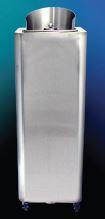 Q Research Solutions launched the qPOD, a patented testing system that helps prevent cross-contamination of scents, allowing fragrance evaluation to take place in any number of previously challenging surroundings, as well as at points of purchase. qPOD has been independently validated by consumer research, professional fragrance evaluators, creative perfumers and sensory scientists. Any room can be used as a testing site utilizing qPOD, creating a wider range of target consumer testers that are more easily accessible. As a result, qPOD helps accelerate the product development cycle and shortens timeframes to market. qPOD’s selfcontained and easily changed setup is suitable for consumer acceptance fragrance screening across many categories and multiple delivery systems – including aerosols, plug-ins, candles, liquids and lathers. qPOD’s secured dosing chamber conceals and protects prototypes; in doing so, the unit also safeguards intellectual property. Fragrance strength and character is consistently sustained for hours, making qPOD a preferred method in exercises such as longevity testing; claims substantiation; benchmarking; product reformulation; and malodor reduction/elimination testing.
Q Research Solutions launched the qPOD, a patented testing system that helps prevent cross-contamination of scents, allowing fragrance evaluation to take place in any number of previously challenging surroundings, as well as at points of purchase. qPOD has been independently validated by consumer research, professional fragrance evaluators, creative perfumers and sensory scientists. Any room can be used as a testing site utilizing qPOD, creating a wider range of target consumer testers that are more easily accessible. As a result, qPOD helps accelerate the product development cycle and shortens timeframes to market. qPOD’s selfcontained and easily changed setup is suitable for consumer acceptance fragrance screening across many categories and multiple delivery systems – including aerosols, plug-ins, candles, liquids and lathers. qPOD’s secured dosing chamber conceals and protects prototypes; in doing so, the unit also safeguards intellectual property. Fragrance strength and character is consistently sustained for hours, making qPOD a preferred method in exercises such as longevity testing; claims substantiation; benchmarking; product reformulation; and malodor reduction/elimination testing.
The American Cleaning Institute (ACI) issued the following statement by ACI President & CEO Ernie Rosenberg in response to the July 25 mark-up of the “Safe Chemicals Act” by the Senate Environment & Public Works Committee:
“ACI has been and remains committed to passage of legislation that strengthens and modernizes the Toxic Substance Control Act. We have been thoroughly engaged in bipartisan discussions to get us on that path.
“It is critical that any legislation enacted into law continues to enhance consumer confidence in a strong, reliable and credible federal chemical management program. We will continue our efforts to obtain a bill that protects product and process innovations without detracting from EPA’s ability to conduct a robust chemical management program. “We recognize and commend the effort and engagement of many Senators on both sides of the aisle. ACI will work toward opportunities for all sides to come together for a bipartisan, bicameral bill that promotes the safe use of chemicals, enhances public confidence in the chemical management system, protects American jobs and maintains U.S. global leadership in chemical innovation.”
The New Jersey Packaging Executives Club has selected five packaging professionals for induction into the Packaging Hall of Fame at the Award Dinner on Sept. 13 at The Manor in West Orange, NJ.
The 2012 Honorees are Don Cardiff (Stolzle Oberglas GmbH); Bill Kunz (Kunz Consulting Services); Jim Detwiler (Chanel USA); Steve Mohary (Johnson & Johnson) and (in memoriam) Navin Desai (411 International Corp). Reservations to attend the Hall of Fame Dinner can be made at www.njpec.org.
Designer, manufacturer and marketer of airless dispensing Industry News solutions Mega Airless has announced that this is its new worldwide brand name, effective immediately. Mega Airless is currently widely known by the two legal entities MegaPlast and MegaPumps.
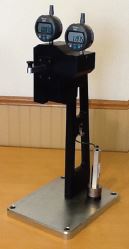 Aero-Tech Laboratory Equipment Co. announced it has become the U.S. distributor for STT, Special Tooling Technologies Ltd. The ATLPCG aerosol can, crimp depth and diameter gauge is lever operated, operator friendly and equipped with ID-C X series Mitutoyo Indicators, direct inch & metric LCD readout, SPC capabilities for data output, presets and parameter settings. The calibration master is attached to the column and mounted to the base for ease of use and can’t be misplaced. Especially made for a production environment, it weighs 30 pounds, is mountable to a table or cart and therefore can’t be accidentally dropped and damaged during use.
Aero-Tech Laboratory Equipment Co. announced it has become the U.S. distributor for STT, Special Tooling Technologies Ltd. The ATLPCG aerosol can, crimp depth and diameter gauge is lever operated, operator friendly and equipped with ID-C X series Mitutoyo Indicators, direct inch & metric LCD readout, SPC capabilities for data output, presets and parameter settings. The calibration master is attached to the column and mounted to the base for ease of use and can’t be misplaced. Especially made for a production environment, it weighs 30 pounds, is mountable to a table or cart and therefore can’t be accidentally dropped and damaged during use.
Honeywell announced that the U.S. Environmental Protection Agency (EPA) has added Solstice Propellant (HFO-1234ze) to the list of compounds excluded from the definition of Volatile Organic Compounds (VOCs). The EPA based its decision on the propellant’s low photochemical reactivity and negligible contribution to the generation of tropospheric ozone. The classification will help aerosol formulators develop products that meet federal VOC regulations, adding another key environmental benefit to the product’s very low global warming potential.
Honeywell’s non-flammable, non-ozone depleting Solstice Propellant has a global warming potential of six andcan be used in various aerosol applications including personal and household care products, dusters, warning systems, industrial cleaners and novelty aerosol products. See also Regulatory Issues, p.37.
Crown Aerosol Packaging North America, a business unit of Crown Holdings, Inc., has been issued a special permit exempting the company from Dept. of Transportation (DOT) regulations on the transportation of pressurized products. According to the company, Crown is the only metal packaging supplier to have received this exemption, which is based on technology advances in lightweighting and double seaming, and helps the company’s customers enhance their own sustainability platforms thanks to overall resource reduction and weight savings, translating to decreased fuel costs during transportation.
The Ardagh Group announced it was restructuring its UK operations. Manufacturing of aerosol sprays at the Dragon Parc site at Abercanaid will be transferred from Merthyr, Wales to Sutton in Ashfield, Nottinghamshire. According to the company, it plans to support the 146 Merthyr employees in the event of job losses and review new employment opportunities at other Ardagh manufacturing locations.
Rexam has agreed to sell its underperforming personal care business in two parts for $709 million in cash and return about $580.5 million of the proceeds to investors.
Private equity firm Sun Capital Partners had agreed to buy the cosmetics, toiletries and household care division for $459 million, Rexam said, while Silgan Holdings would acquire its high-barrier food packaging business for $250 million.
Rexam put the businesses, which employ 7,000 people, on the block in February because they had been hit by rising costs and lower volumes. The company said it would
restructure as a result of the sale.
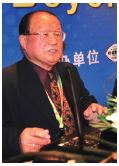 Jiang Guomin—Director of both the Shanghai Aerosol Chemical Technology Institute and the Shanghai Spray & Aerosol Research Center, as well as standing President of the Shanghai Spray Technology Society— recently presented Environment Friendly Fumigants & Their Application for Health, Quarantine & Inspection at the Frontier at the 2nd Beyond Agriculture Seminar in Shanghai, China.
Jiang Guomin—Director of both the Shanghai Aerosol Chemical Technology Institute and the Shanghai Spray & Aerosol Research Center, as well as standing President of the Shanghai Spray Technology Society— recently presented Environment Friendly Fumigants & Their Application for Health, Quarantine & Inspection at the Frontier at the 2nd Beyond Agriculture Seminar in Shanghai, China.
The New Britain Rock Cats Baseball Club, the Double-A Eastern League Affiliate of the Minnesota Twins, announced that they are teaming up with the Alliance for Consumer Education (ACE) to create a New England-wide program to “Strike Out Inhalant Abuse” at six Minor League ballparks in six different states in 2012. The effort seeks to bring awareness to the serious problem of inhalant abuse in a unique program designed to educate parents, school officials and individuals in the community about the often-overlooked dangers.
Participating baseball teams will work with their local SADD (Students Against Destructive Decisions) Chapter to conduct awareness school assemblies and community appearances with mascots and players to educate fans about the dangers of inhalant abuse. The Inhalant Awareness message will be shared all summer through team websites and in-stadium announcements, and the program will culminate in an “Awareness Game” at each stadium. The Rock Cats’ Inhalant Abuse Prevention Night will take place on Tuesday, July 17 as the Rock Cats take on the New Hampshire Fisher Cats (Toronto-AL). The Rock Cats
will feature a poster giveaway for the first 1,200 kids that enter the ballpark.
The Lighthouse for the Blind-Saint Louis (LHB Industries) announced that its Power Green all-purpose cleaner/degreaser product earned a Bio-Based, Bio-Preferred certification from the U.S. Dept. of Agriculture (USDA). As a result, LHB Industries can now display the USDA’s Bio-Preferred program logo on its Power Green products, including 22-ounce trigger spray bottles, which will be sold under the Skilcraft brand and distributed through AbilityOne sales channels, a federal initiative to help people who are blind and disabled find employment.
LHB Industries is a non-profit entity that currently employs nearly 70 people who are legally blind. Employees manufacture, assemble, warehouse and sell products to government and business customers nationwide, including aerosol and liquid paints, aerosol and liquid cleaning products first aid kits, medical kits, catheters, ecofriendly
products and others.
Zetonna (ciclesonide, Sunovion), a nasal aerosol for the maintenance treatment of asthma, was approved in January to treat both ocular and nasal symptoms associated with seasonal allergic rhinitis (SAR) and nasal symptoms associated with perennial allergic rhinitis (PAR) in adults and adolescents aged >12 years, It is expected to be commercially available in the third quarter of 2012. The non-aqueous, dry nasal aerosol spray features an easy-to-read, built-in dose indicator, so patients can track when their prescriptions should be refilled.
Arminak & Associates, part of Rieke Packaging Systems, has entered into New Albany Business Park’s beauty and personal care campus in New Albany, OH. Businesses participating in this collaborative supply chain campus allow personal care and beauty products to be developed, manufactured, packaged and distributed from one campus. Approximately 50 jobs will be created when the new 50,000 square foot facility opens later this year.
BASF has launched a new brand website for its personal care business Care Creations and the “Inspired by life” communications concept. Also new is a Personal Care Press Center, giving journalists easy access to the BASF Personal Care-related information. The mobile-friendly web design automatically adjusts to different display sizes including personal computers, tablet PCs and smart phones. www.carecreations.basf.com.
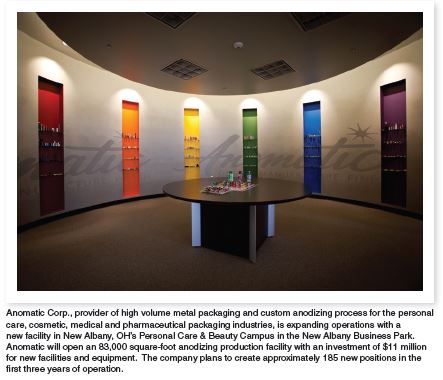
Active Organics, Inc. announced the launch of its newly redesigned website. www.activeorganics.com contains new features, imagery and refreshed content about Active Organics, its people and products. The site is easier to navigate and more functional
for customers, including a page dedicated to the company’s innovation process. Information on every page can be shared through social media.

Ball Corp. announced a metal technology breakthrough that enables the use of recycled aluminum in the manufacture of extruded aluminum packaging
for aerosols. The resulting new metal alloy exhibits increased strength and allows “lightweighting” of the container without affecting package integrity. Ball’s technology breakthrough will allow the company to lightweight its extruded aluminum aerosol packaging by as much as 10%, with further
lightweighting expected in the future.
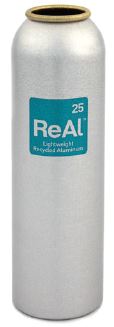 Currently, almost all extruded aluminum aerosol packaging is made from virgin aluminum “slugs.” These metal disks are impact extruded to produce
Currently, almost all extruded aluminum aerosol packaging is made from virgin aluminum “slugs.” These metal disks are impact extruded to produce
packaging for aerosol products. Ball will use aluminum recycled from Ball’s global beverage can operations to produce the company’s new slugs.
“Our ReAl brand slugs will improve the carbon footprint of increasingly popular extruded aluminum packaging by enabling us to reduce the amount of metal in the package and further enhance the environmental performance of our company,” said Raymond Seabrook, Ball COO, Global Packaging. “This breakthrough comes after months of collaboration between our global metal technology experts and innovation teams, and brings additional value to
the supply chain by adding recycled aluminum from our beverage can plants into our slug manufacturing processes and by lightweighting our extruded aluminum packaging. We are excited to bring this new solution to our customers around the world in the coming months.”
Ball will begin producing cans made with ReAl slugs initially in Europe, and has applied for patents on its ReAl packaging. Clayton Corp. has announced
the company has been issued a patent on its non-sticking valve technology designed for the aerosol 1-component moisture cured polyurethane foam (“PUFoam”) market. The patent was issued in the U.S., China and the EU. The non-sticking valve technology helped solved a long term and costly problem created when regulations required the removal of Freon propellants from PU Foam.
Cosmoprof North America (CPNA) will take place July 22–24 at the Mandalay Bay Convention Center in Las Vegas, NV. The Discover Beauty program will return for its sixth year of matching leading retailers with emerging beauty brands in 2012. Companies from all over the world will be selected to participate as show organizers arrange pre-scheduled sales meetings and events with retailers (although all show visitors are invited to learn more about these brands). YouBeauty.com (a website that explores the link between beauty and science) will also partner with the Discover Beauty program to find brands for their new ecommerce site, BeautySage.com, which
launches Spring 2012.
New this year, CPNA introduces Spotlights, an exclusive initiative within the
Discover Beauty program. The new exhibit space will allow smaller companies that are big on creativity but tight on budget the opportunity to
showcase their products at CPNA.
The International Fragrance Association, North America (IFRANA) announced it is joining the Safe Cosmetics Alliance and its efforts in supporting new legislation to help safety regulations keep pace with scientific and technological advancements in personal care products. The Alliance is working to champion modernizing the industry’s U.S. cosmetic product safety laws, according to Alliance officials. The U.S.-based coalition supports
science-backed federal legislation that would strengthen U.S. Food & Drug
Administration oversight of the industry, increase transparency and enhance existing consumer safeguards.
MeadWestvaco Corp. announced the official opening of its state-of-the art pilot plant located in Richmond, VA. The pilot plant is a 48,000 -squarefoot
packaging materials and technologies research and development facility.